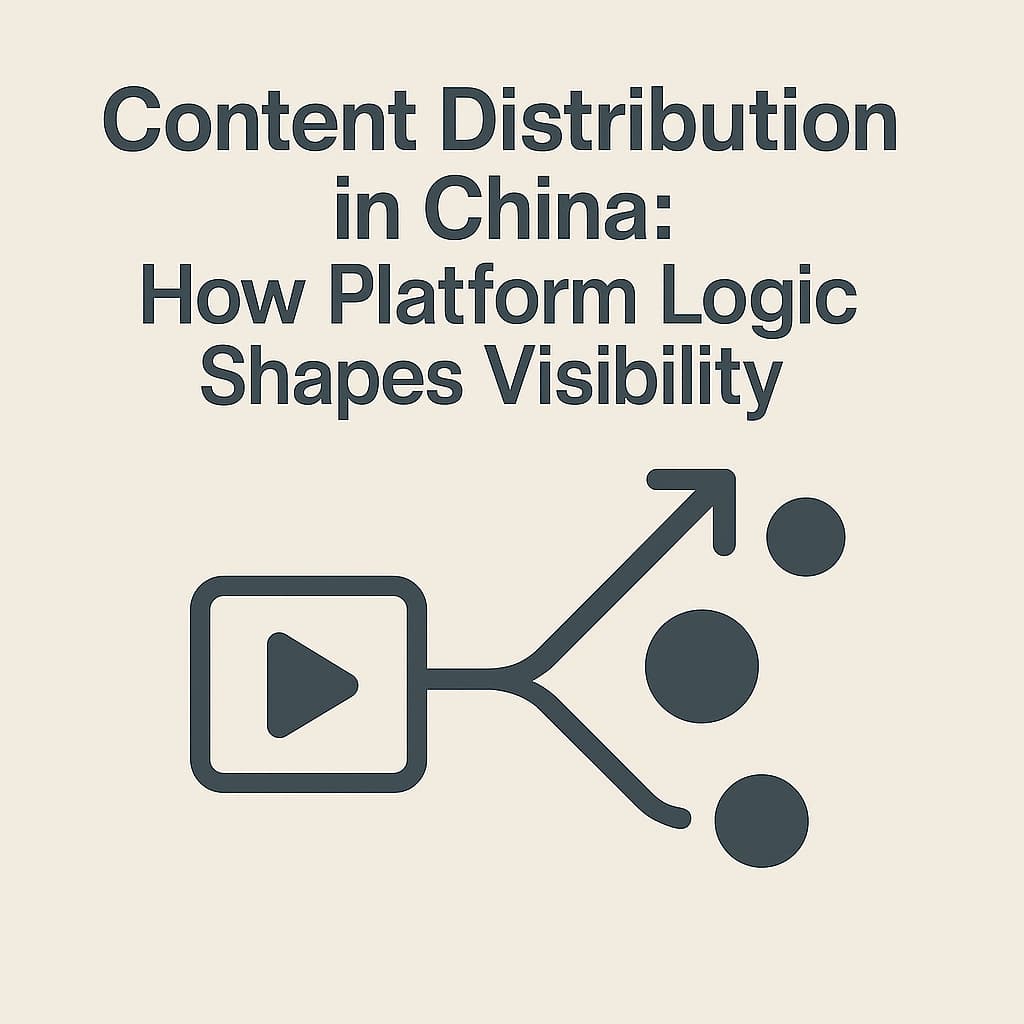Content Distribution in China: How Platform Logic Shapes Visibility
By The Olivia
Content & SEO Strategist for China Market.
This post is part of the “Content Platform” series. Click here to view the series introduction and why it was created.
Introduction
Many global brands understand that China’s content platforms run differently.
What’s less understood is how they decide what gets seen — and why polished content often sinks faster than rougher, native-looking posts.
Visibility in China is shaped by platform grammar — the hidden rules that govern how attention moves, how algorithms interpret signals, and how users behave.
Understanding that structure is the real foundation of content strategy here.
1. Search Isn’t Discovery
Chinese platforms have search bars, but they don’t function like Google.
Search results are filtered through behavior data: how users engage, how content is structured, how early signals perform.
On Rednote, a clean cover image and an active first three lines often outweigh keyword precision.
On Zhihu, the system looks for logic and response potential.
On Bilibili, early engagement decides whether a video stays visible.
Search is just the entry point; behavior determines who actually sees you.
2. Every Platform Has Its Own Grammar
Each ecosystem has its own rhythm and visual logic.
- Rednote: Visual clarity and fast readability drive exposure.
- Zhihu: Argument and structure signal credibility.
- Bilibili: Retention metrics define success.
When brands reuse one piece of content everywhere, they lose the advantage of fit.
Format, tone, and pace matter as much as message.
3. User Behavior Sets the Real Limits
Chinese users interact differently across platforms:
Rednote favors quiet saving; Zhihu thrives on discussion; Bilibili rewards watch time.
Content performance depends less on how good it looks, and more on whether it aligns with these habits.
Misreading behavior leads to wasted effort — even when the story is right.
Closing
Content distribution in China isn’t just a technical process.
It’s a reflection of how attention is organized.
Brands that learn these internal rules stop asking “why we’re not seen” and start seeing where their structure breaks.
That’s when visibility becomes strategic, not accidental.
← Back to All Articles
← Learn more about my services
You May Also Like:
Why Rednote Brand Accounts Struggle to Grow
Rednote brand accounts often struggle to grow. Learn why billboard-style content holds them back and what works better.
How to Balance Paid Ads and Organic Content on Rednote
On Rednote, ads drive visibility while organic posts create lasting trust. The real challenge is balancing both at different stages.
Ready to take your content further?
Let’s build a strategy that resonates in the Chinese market.
THE OLIVIA WAY
© 2025 THE OLIVIA WAY. All rights reserved.
